Finnish pulla is sweet cardamom bread that can be baked into braids, round buns, or the dough can be used to make cinnamon buns.
Pulla is also called Nisu in northern Finland. Here are all my tips on how to make perfect Finnish pulla cardamom buns.
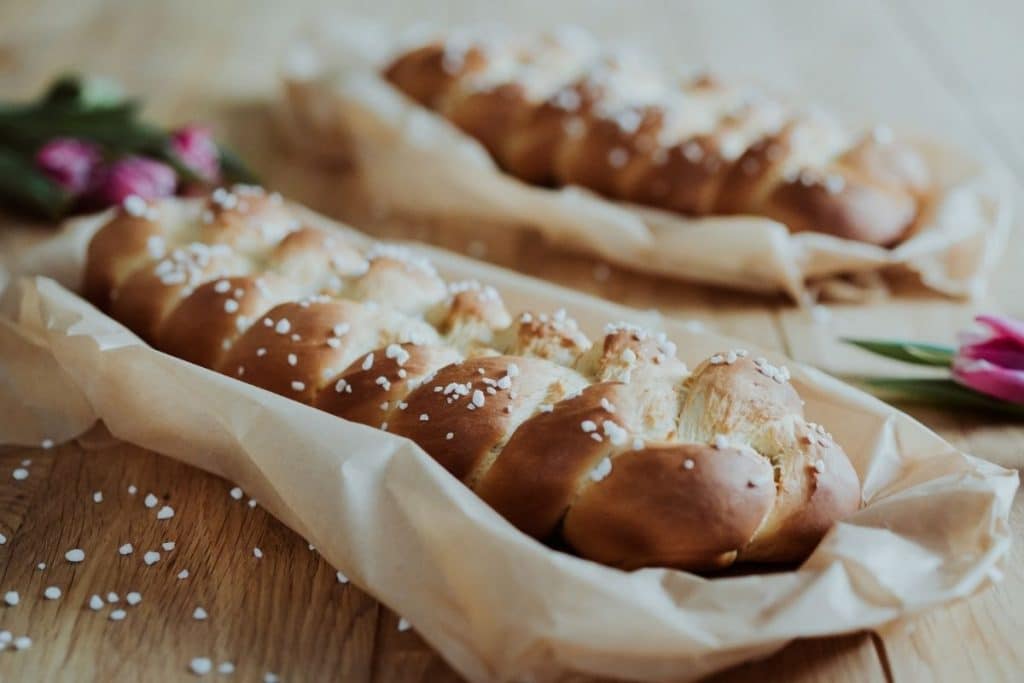
Jump to:
- When is pulla eaten in Finland?
- Ingredients for pulla
- How to make pulla buns?
- How to braid Finnish pulla bread?
- Baking pulla in a stand mixer
- Tips on how to let the dough rise
- What temperature is best for baking pulla?
- Types of pulla Finnish eat
- Other pulla dough recipes at scandicuisine
- Finnish pulla-cardamom bread
When is pulla eaten in Finland?
Pulla is just not a holiday treat. It is actually commonly eaten during coffee break. We have a similar tradition to the Swedish Fika. In Finland, we just love some pulla with coffee. All grannies and grandpas like to eat braided cardamom bread, but I think the younger generation loves cinnamon buns more, like korvapuusti or other filled pulla pastries.
One special cardamom bun is the laskiaispulla, Shrovetide bun. This is traditionally eaten at Shrovetide in February-March. The pulla dough is baked to round buns and filled with whipped cream and jam or marzipan.
Ingredients for pulla
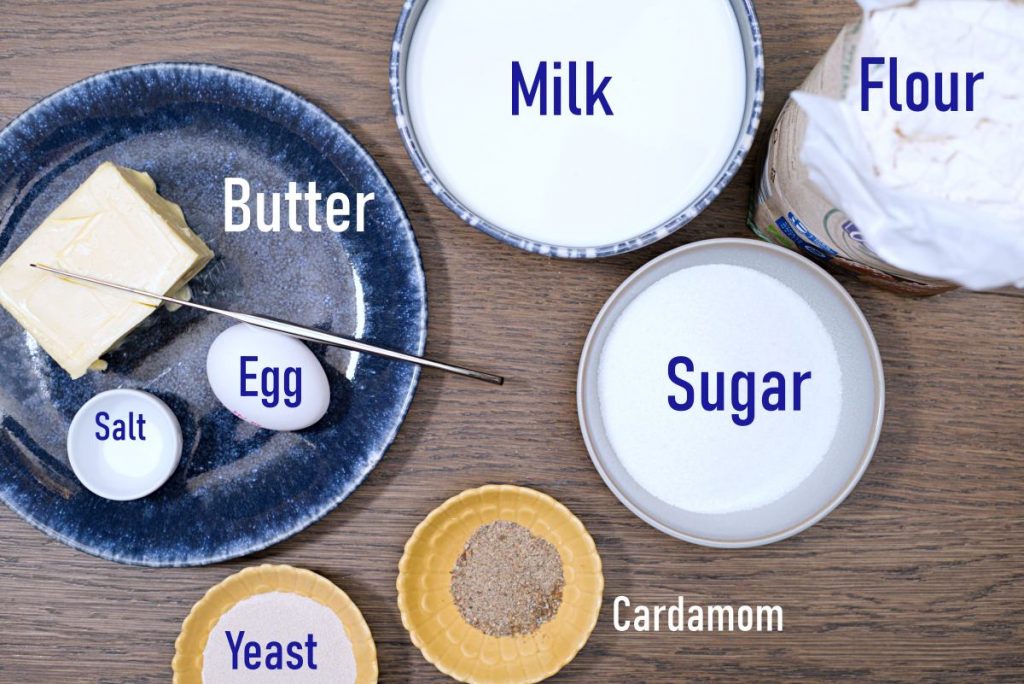
- Milk. Whole milk gives the best taste to pulla. If you don´t have any, you can also bake it in water.
- Dry active yeast. You can also use fresh cake yeast.
- Wheat flour. A flour that has a relatively high protein content is best. Bread flour works great for these buns.
- Butter. You can also use margarine, but it lacks the same taste.
- Egg. An egg is optional in the dough.
- Sugar. You can make sugar-free pulla from erythritol. Brown sugar works also.
- Cardamom. You need the green cardamom for this recipe. Buy as ready ground or grind it yourself from pods.
- Salt. Salt is vital for the taste and consistency.
- Raisins. Some like to add black raisins in their pulla; especially the braided bread often has raisins added.
What type of flour is best for cardamom bun?
You can bake pulla from these flours:
- Bread flour
- All-purpose flour
- Cake flour mixed with some other flour.
Do not use whole wheat flour since this does not taste so good in pulla. Pastry flour should not be used either since it hasn't enough gluten.
You can use cake flour, but it should be mixed with some other high-protein type flour like bread flour or 00-pizza flour. If you only have cake flour at home, then it is good to reduce the fat content a bit so the pulla rises properly.
Self-rising flour is not good for these buns since it has a leavening agent and these are raised with yeast. Otherwise, you get two types of leavening agents n the dough.
The protein content in the flours can vary by brand also. For example in King Arthur flours you can use both all-purpose and bread flour for cardamom buns. The same goes with Bob's red mill flours.
Egg in the pulla dough
Do you need egg in the dough? No, but it does give a bit more firm consistency. Egg also makes the buns a bit more dry, which can be noticed after a few days of storing.
If you make pulla to sell it or for big gatherings, it might be a good idea to leave the egg away, since many people are egg allergies.
Type of cardamom
The common types of cardamom are black and green. For the cardamom bread, you need green cardamom pods. You can ground your own cardamom with a mortar and pestle. Well-equipped stores also sell ground and powdered cardamom.
The traditional Finnish pulla has quite coarse ground cardamom in the dough. The best-flavored cardamom is from freshly ground seeds in the pods. (do not use the green outer layer, just the seeds)
How to make gluten-free pulla?
Gluten-free pulla bread can be made from a gluten-free flour mix. Depending on the brand you use, you get quite different consistency to the pulla. It is a good idea to make a soft dough and make it in paper muffin cups as round buns, and not braided loaf.
To get some viscosity in a gluten-free dough you can use psyllium fiber.
Milk-free Finnish cardamom bread
This is made by replacing regular milk with plant milk. Soy-, oat-, and almond milk are all great options. For fat, you use margarine instead of butter.
Vegan pulla
You can use the same recipe for vegan pulla as for normal by making some adjustments. Use plant milk as the liquid. Leave the egg away from the recipe and use margarine or other plant-based butter.
How to make pulla buns?
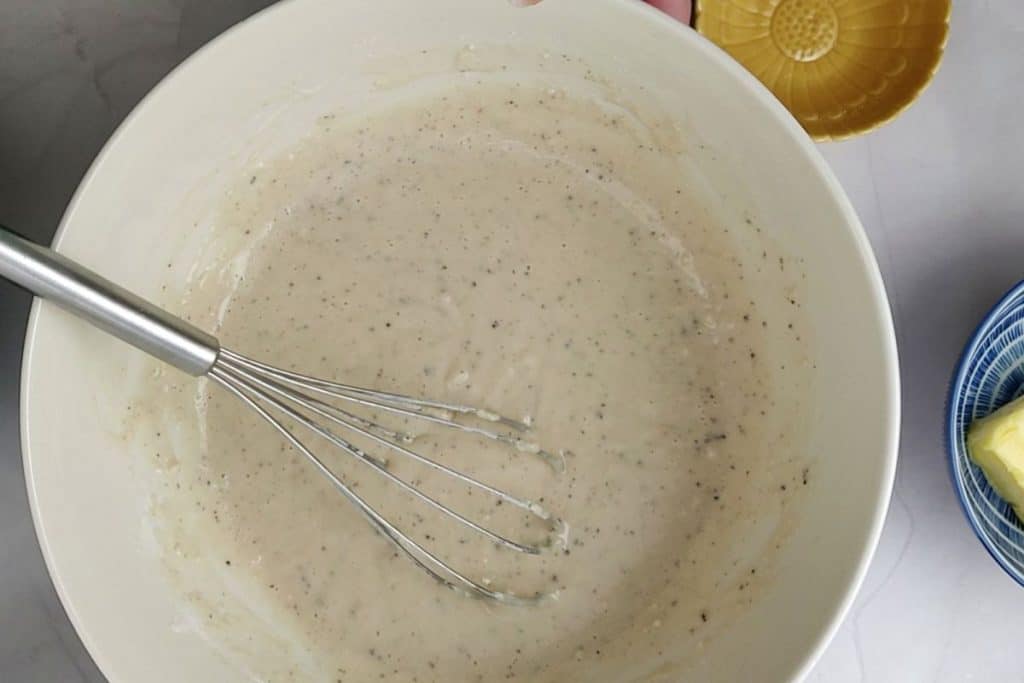

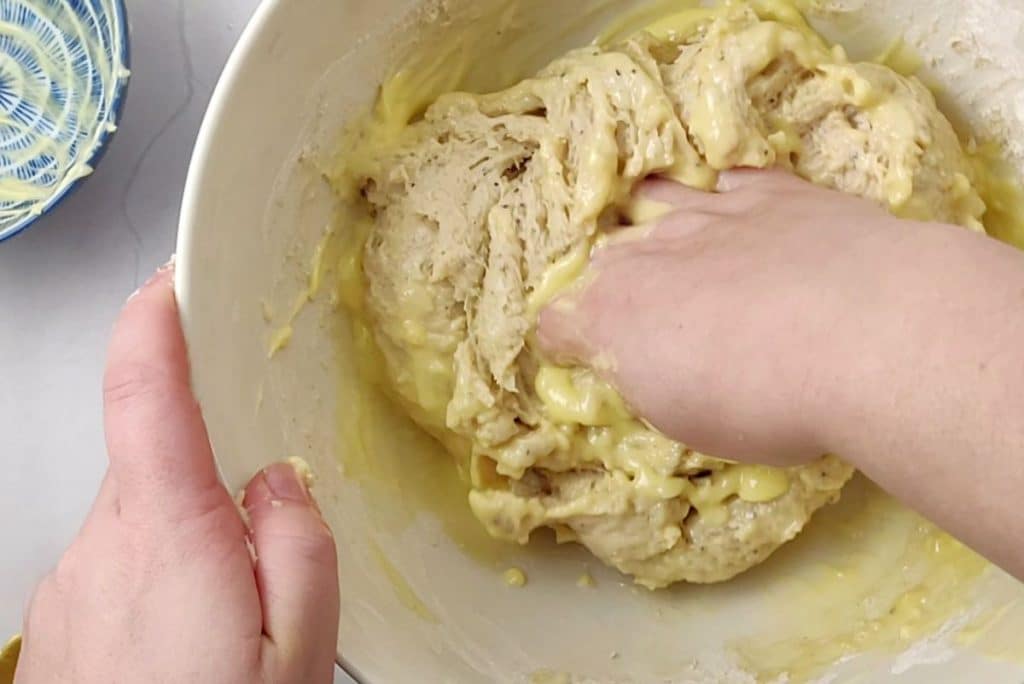

- Take out your butter to soften up in room temperature. You can microwave it for up to 30 seconds. t should not be melted, just softened.
- Warm your milk to 108F, 42C if you use dry yeast. You can do this in the microwave, or on the stovetop. If you warm your milk in a saucepan, be sure to stir it constantly. 108 F feels a bit warm to the finger, but not at all too hot.
- Dissolve your yeast into the milk. Add also the sugar, cardamom, and 1-2 cups of flour. Beat it to make a batter. The warm milk and sugar activate the yeast. Now you can add your salt and egg. It is good if it is room temperature.
- Add in gradually your flour while mixing the batter at the same time. You can use a wooden spoon at the beginning. Once it has become a bit firmer, knead the dough with your hand.
- Once you have got some elasticity in the dough you can add in your butter. Keep on kneading.
- Your pulla dough needs to be kneaded for at least 5-10 minutes. You can test if the dough is kneaded enough by taking a small piece of dough in between your fingers and stretching it. If it has enough elasticity the dough stretches nicely.
- You can knead your dough in the bowl or on your counter.
- After kneading you need to let your dough rest and rise. Cover your bowl with a cloth and let the dough rest in a warm place for 20 minutes. To get warm conditions, you can for example have the bowl in a water bath in the sink.
- Time to bake your buns. If you make braided loaves of pulla look instructions below. You can also bake the dough to round buns 20-40 pieces by kneading them against the surface of your palm. (the video shows you how). The dough can also be baked into cinnamon buns or other types of pulla.
- Put your buns or loaves on a baking tray covered with baking paper. (you might need several)
- Let them rise for at least 30 minutes, up to an hour. They should be about double in size. It is good to keep your pulla covered with plastic wrap or cloth so the surface does not dry up. The dough rises best in a warm place.
- Brush the loaves/buns with beaten egg. If the egg is "hard to handle" you can add a tablespoon of water to it. Sprinkle some pearl sugar on top of the buns
- Bake the small round buns at 375-400 (200C) F for about 10-12 minutes, big buns for 12-15 minutes, and braided loaves for 20-25 minutes. The buns should be golden brown on top.
Pro tip: Bake your pulla on an oiled surface instead of floured one. This makes less mess and is easier to clean.
How to braid Finnish pulla bread?

You can make two big braids from the amount of dough in the recipe. This is how you make a simple braid;
- Divide the whole dough into two balls.
- Divide the ball into three equal portions.
- Roll each portion into a skinny rope about 15 inches long.
- Line up three dough ropes side by side on the counter in front of you. (Oil or flour on the surface thinly)
- Pinch one end of the rope together, then gently braid the three ropes into a loaf.
- When you reach the end, pinch the remaining dough together and tuck it under the loaf slightly.
- Repeat with the other dough ball.
If you want to learn more advanced braiding techniques you can watch the video below.
Baking pulla in a stand mixer
The easiest way to make cardamom bread dough is to knead it in a stand mixer. You follow the same steps as in the regular recipe when adding ingredients. Use the lowest speed in the mixer. You use the hook in the mixer when making pulla.
With the lowest speed, you knead the dough in a mixer for about 15-20 minutes. If you use a higher speed, then less time is needed. This dough is quite big so the lower speed should work well.
With a stand mixer, it is possible to over-knead the dough. This happens if you knead it too long and the gluten strands start to break. You can notice this if the dough becomes soft and soggy again after it has been firm.
There is little to do if you over-knead it. Let it rest, add a bit more flour and eat your buns a bit flatter.
Tips on how to let the dough rise
The pulla dough likes to have moist and warm conditions to rise. Here are some tips on how to achieve it.
- If you have a warm home you might not need to create any special conditions
- In the oven. You can warm up your oven to 100F. Problem is that often the temperature is hard to control and it becomes too hot.
- On top of the oven can be a warm place if your oven is on.
- In a water bath. You can pour some hot water into the sink and have the baking tray on top.
- In the sauna. The sauna is a perfect place to let the buns rise. And there is good with space. Warm it to 100 F.
Pulla also likes to be moist when you let it rise. You can spray the surface lightly with water.
What temperature is best for baking pulla?
In some recipes, you might see temperatures up to 440F. this is though too high in my opinion and makes dryer buns and ones that are very dark on the bottom. The best temperature for cardamom buns is around 400F.
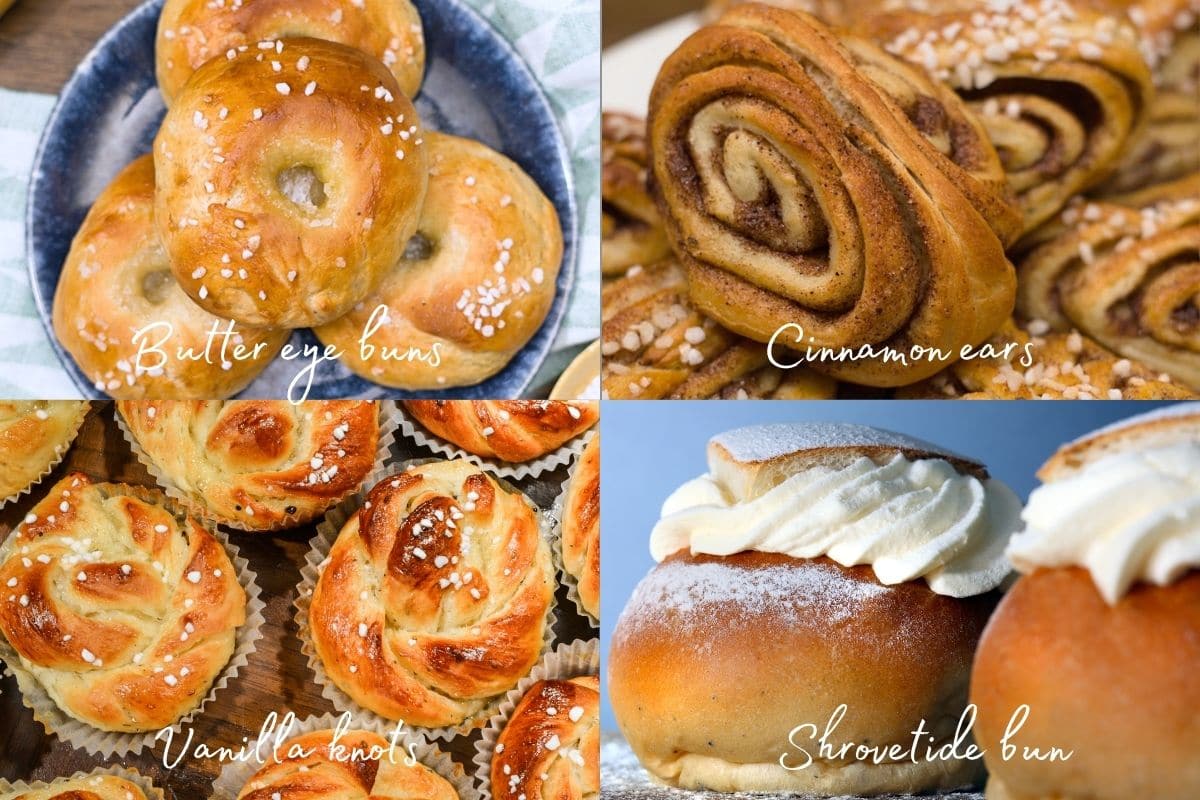
Types of pulla Finnish eat
- Perinteinen pulla- traditional round buns
- Pullapitko- braided bun
- Rusinapulla-cardamom bread with raisins
- Kanelipulla- cinnamon bun
- Korvapuusti- cinnamon bun in an ear shape
- Dallaspulla- with vanilla curd filling.
- Texaspulla- brown sugar-cinnamon-butter filled buns
- Kristallipulla- vanilla butter filling and sprinkled sugar
- Voisilmäpulla- round buns with butter and sugar eye in the middle
- Laskiaispulla- Shrovetide bun is filled with cream and jam or marzipan
- Rahkapulla- milkcurd filling. Sometimes with peach or other fruit
- Mustikkapulla- blueberry filling on top
- Lucia pulla- saffron buns in a special shape
- Bostonpulla- bunrolls are baked in a pan with filling
- Munkki- made of bun dough ad deep fried in oil with sugar coating
- Vaniljapulla- vanilla cream buns
- Puolukkapulla- lingonberry bun
- Tähtipulla- a special big star-shaped braided pulla.
As you see Finns love pulla dough with different fillings. If you visit Finland remember to taste the different types. You can find in many grocery stores fresh-baked buns. Also, you can buy different types of frozen pulla (as dough) and bake it in the oven.
Even some berry pies can be baked in pulla dough. One popular is mustikkapulla-a blueberry bun that can be baked as round buns with a blueberry jam center or as a sheet cake style pulla pie with the base as thin pulla dough and on top a hefty layer with Finnish blueberries(bilberries).
Other pulla dough recipes at scandicuisine
- Swedish cinnamon rolls
- Laskiaispulla-shrovetide buns with cream
- Swedish Semla
- Korvapuusti-Finnish cinnamon rolls
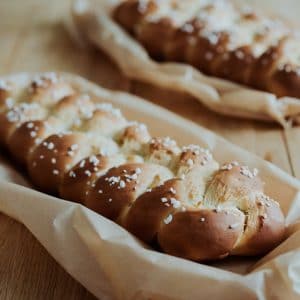
Finnish pulla-cardamom bread
Ingredients
- 2 cups milk
- 3 tablespoon dry active yeast, 22 grams
- ¾ cup sugar
- 200 grams butter ¾ cup
- 1 egg
- 1 tablespoon ground cardamom
- 1 teaspoon salt
- 6 cups bread or all-purpose flour. (you might need a bit more)
On top
- 1 egg
- 3 tablespoon pearl sugar
Instructions
- Take out your butter to soften up at room temperature. You can microwave it for up to 30 seconds. It should not be melted, just softened.
- Warm your milk to 108F, 42C if you use dry yeast. 108 F feels a bit warm to the finger but not at all too hot. For fresh yeast, lukewarm is good.
- Dissolve your yeast into the milk. Add the sugar, cardamom, and 1-2 cups of flour. Beat it to make a batter. The warm milk and sugar activate the yeast. Now you can add your salt and egg.
- Add in your flour gradually while mixing the batter at the same time. Once it has become a bit firmer, knead the dough with your hand.
- Once you have some elasticity in the dough, you can add your butter. Keep on kneading.
- Your pulla dough needs to be kneaded for at least 5-10 minutes. You can test if the dough is kneaded enough by taking a small piece of dough in between your fingers and stretching it. If it has enough elasticity, the dough pulls nicely.
- After kneading, you need to let your dough rest and rise. Cover your bowl with a cloth and let the dough rest in a warm place for 20 minutes. To get warm conditions, you can have the bowl in a water bath in the sink.
- Bake the dough to 20-25 round buns by kneading them against the surface in your palm. Or you can make two braided loaves from the dough.
- You make braided loaves by forming the dough into 6 skinny ropes about 15 inches long. Line up three and pinch them together at the top. Braid them and pinch the ends also together. Tuck under the ends if needed. Repeat with the other three ropes.
- Let your buns or loaves rise for at least 30 minutes, up to an hour. They should be about double in size. It is good to keep your pulla covered with plastic wrap or cloth so the surface does not dry up. The dough rises best in a warm place.
- Brush the loaves/buns with beaten egg. If the egg is "hard to handle," you can add a tablespoon of water to it. Sprinkle some pearl sugar on top of the buns
- Bake small round buns at 375-400 (200C) F for about 10-12 minutes, big buns for 12-15 minutes, and braided loaves for 20-25 minutes. The buns should be golden brown on top.


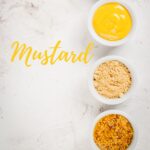


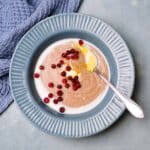
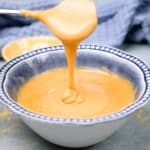
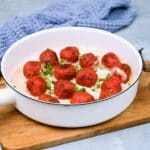
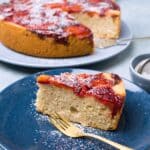
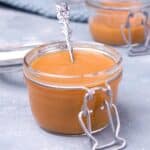
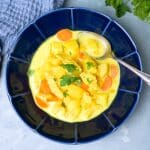
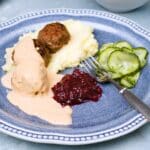

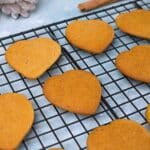
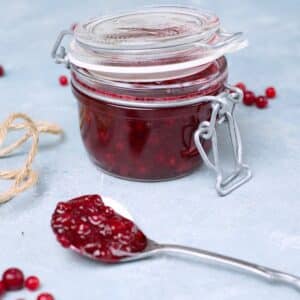
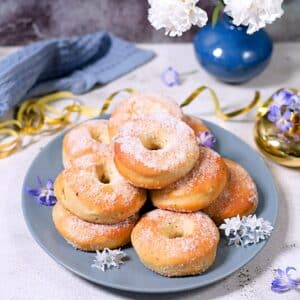
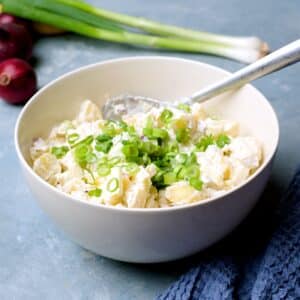
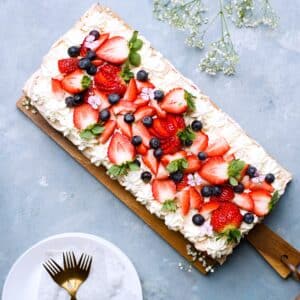
michele nojonen
Hi. I use Bob's Red Mill GF all-purpose flour with the Xanthan Gum already added to the mixture. Do I still need to add more Xanthan Gum to the recipe and do I still use the suggested amount of flour the recipe calls for?
Cecilia Hoikka
Hi, I have not tested this flour, so not really sure, but GF-flours have more liquid absorption so I would reduce flour amount by at least 1/2 cup.